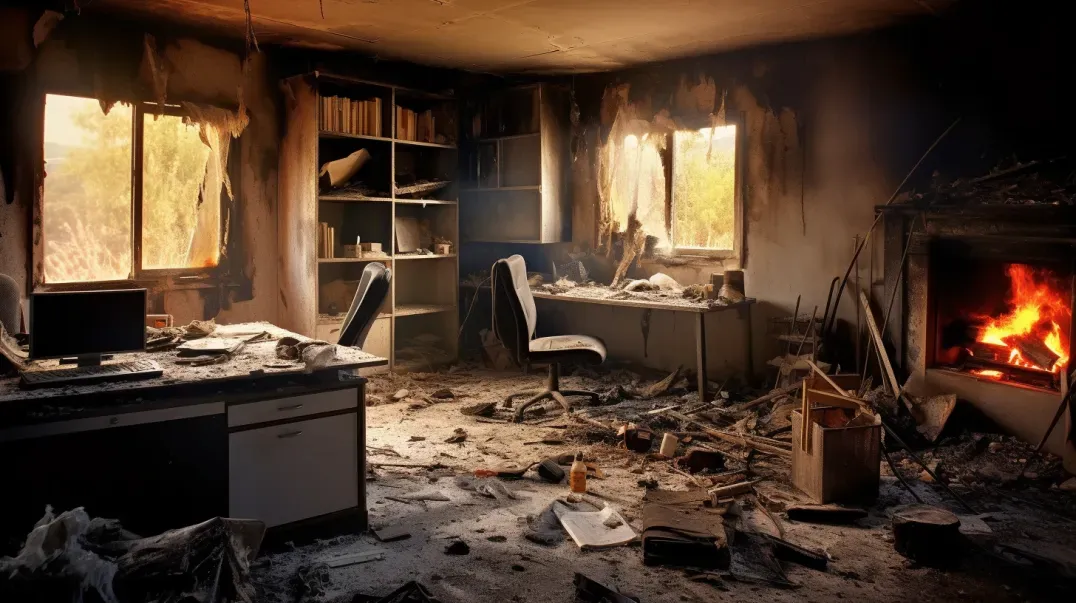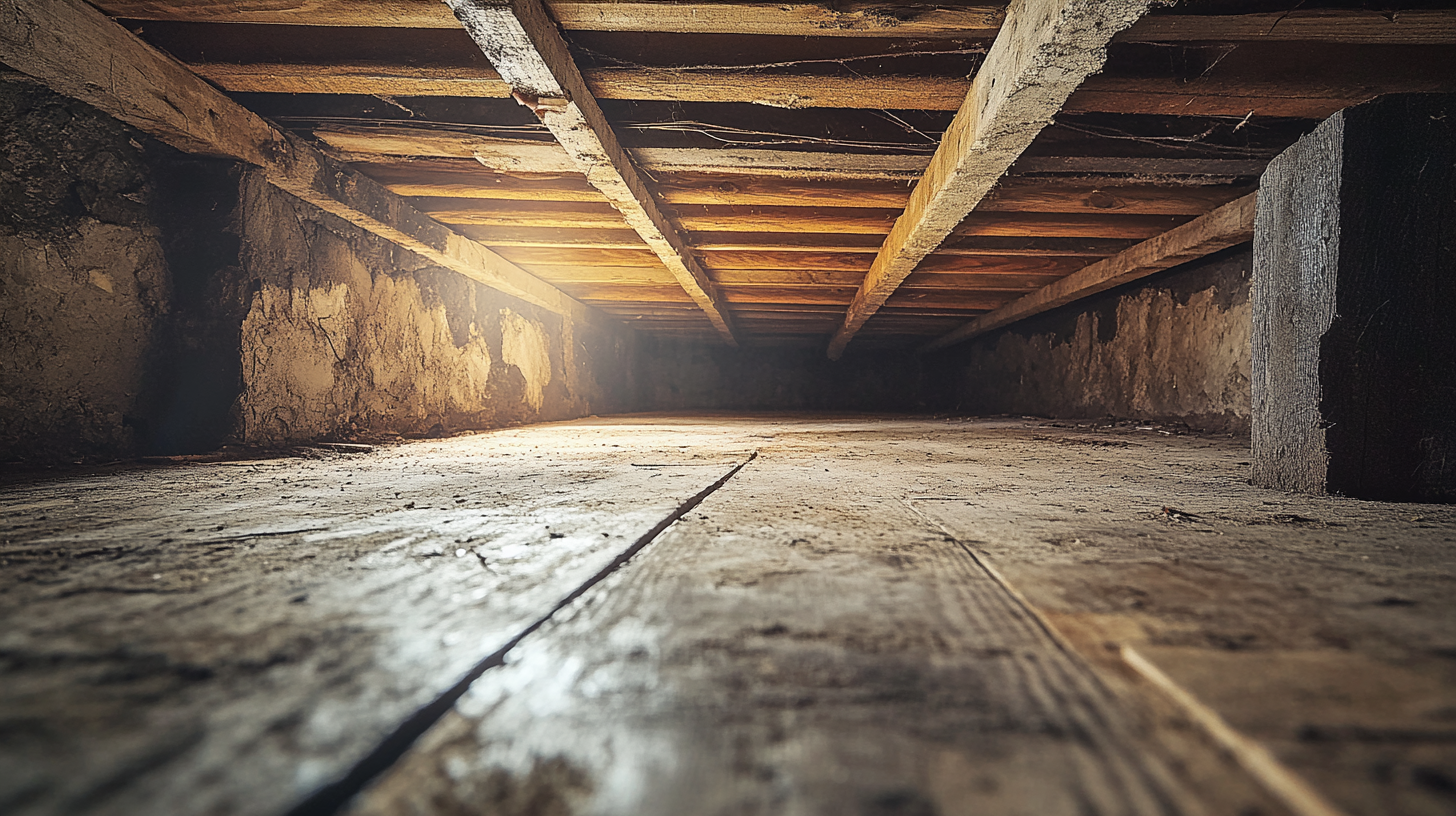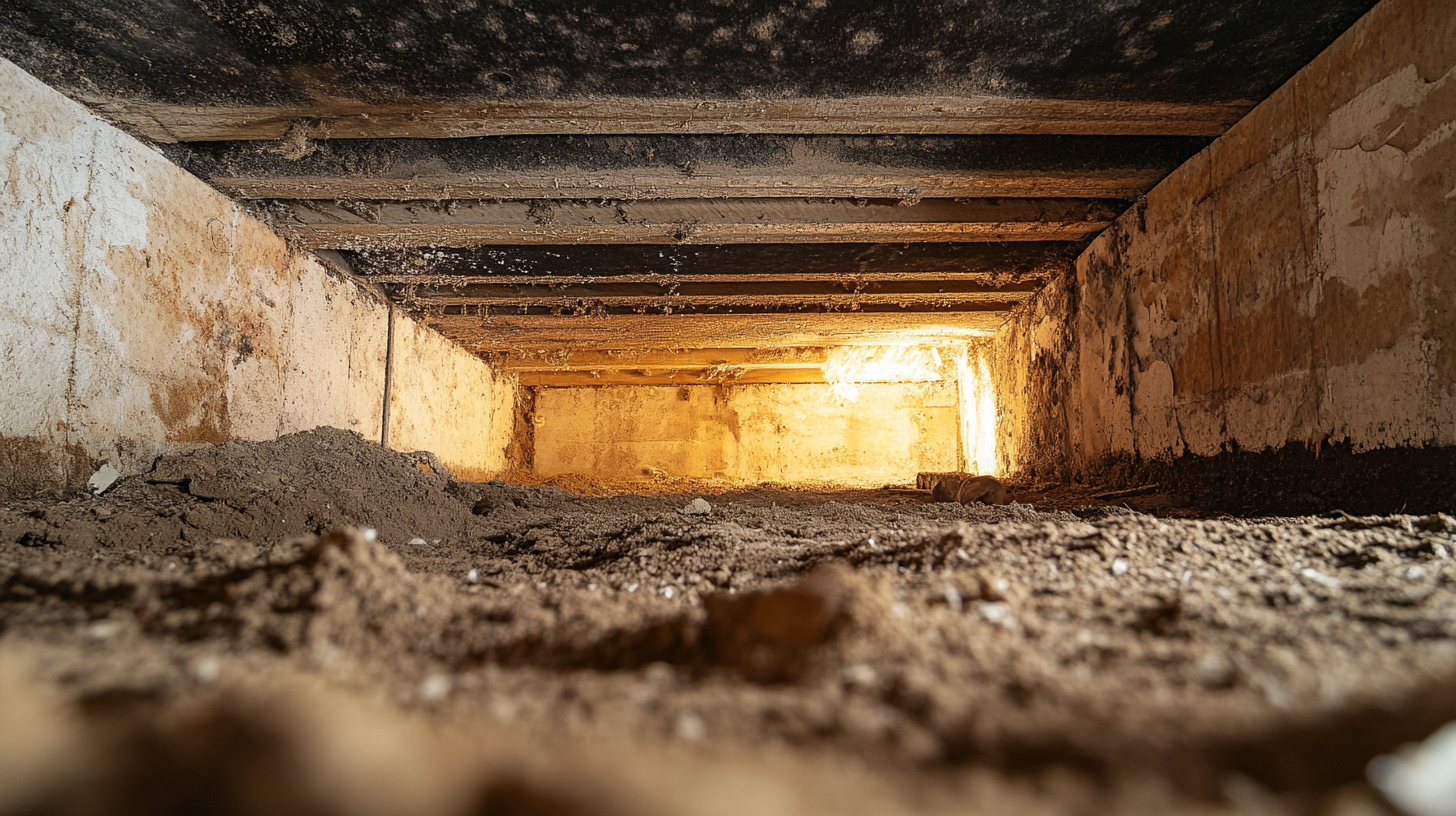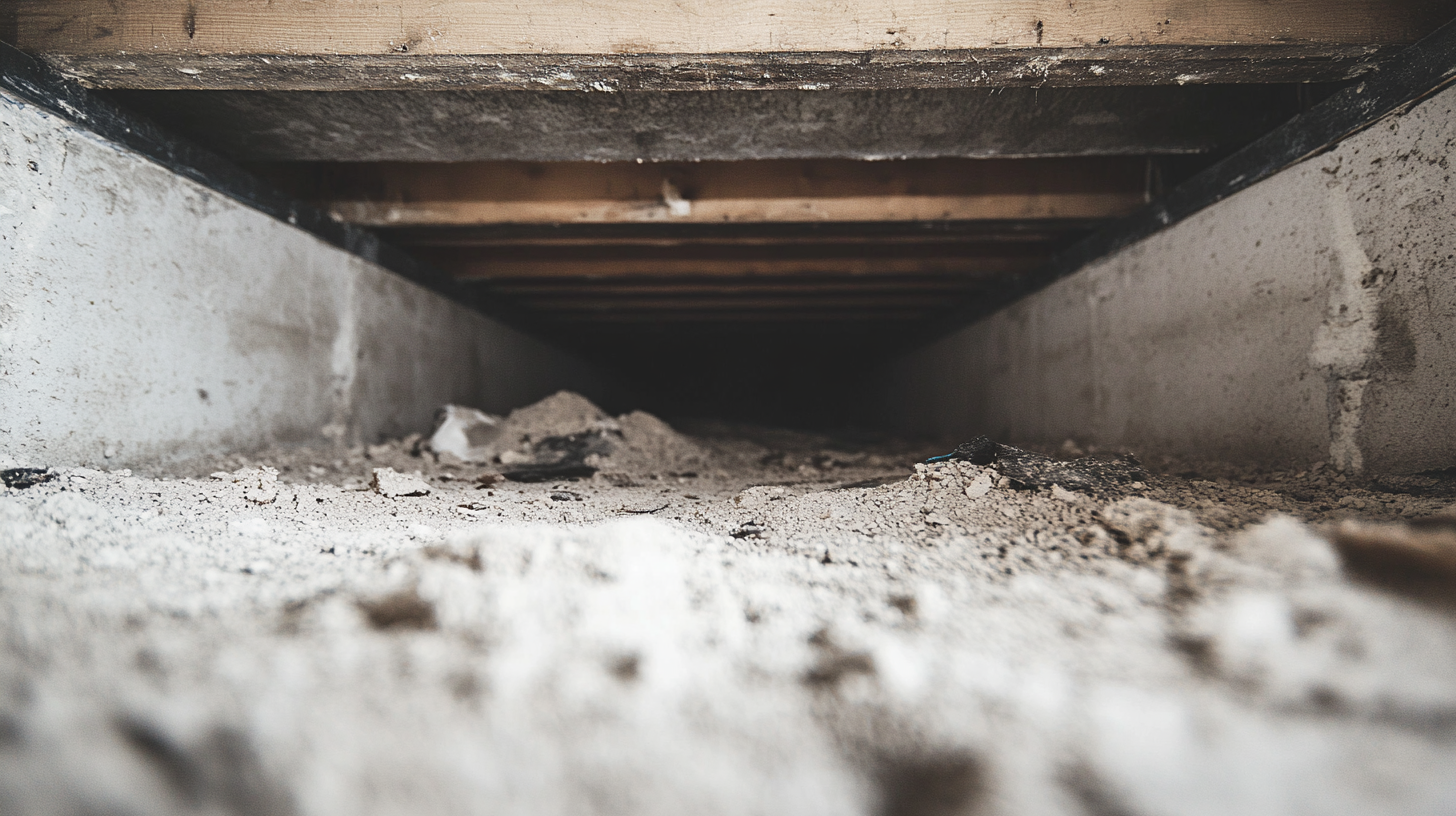The Importance of Immediate Fire Damage Assessment: Timing and Consequences

The immediate aftermath of a fire incident in residential or commercial properties is a critical period that requires swift and informed action to ensure safety, mitigate further damage, and begin the recovery process. Fires can leave buildings structurally compromised, with hidden dangers such as weakened beams, damaged electrical systems, and hazardous materials like asbestos and lead paint exposed. Additionally, the water and chemicals used in firefighting efforts can cause secondary damage, including mold growth and wood rot. This blog will provide a comprehensive overview of the essential steps to take in the immediate aftermath of a fire, from ensuring structural safety and documenting damage for insurance purposes to engaging professional assessments and planning for restoration. By understanding these crucial actions, property owners can navigate the complexities of fire recovery more effectively, safeguarding their property and health while paving the way for a successful rebuilding process.
The Critical First Hours After a Fire
Safety First
In the critical first hours after a fire, ensuring the safety of occupants and first responders is of utmost importance. The initial assessment focuses on confirming structural stability and addressing immediate hazards.
The Urgency of Confirming Structural Stability to Ensure Safety for Occupants and First Responders:
- Structural Assessment: Professionals, such as structural engineers and fire safety inspectors, conduct a preliminary visual inspection to identify any obvious signs of structural compromise. This includes checking for sagging roofs, cracked walls, and weakened floors.
- Access Control: To prevent injury, access to the property is restricted until it is deemed safe. This ensures that only qualified personnel enter the potentially hazardous area.
- Safety Zones: Establishing safety zones around the most damaged areas helps prevent accidents and allows for safe navigation of the site.
Initial Steps Professionals Take to Secure the Site, Including Utilities Management (Gas, Electricity, Water):
- Utilities Shutoff: Immediate disconnection of gas, electricity, and water supplies is essential to prevent secondary hazards such as gas leaks, electrical shocks, or further water damage. Professionals ensure all utilities are safely turned off and secured.
- Debris Clearance: Removing debris from entryways and high-traffic areas reduces the risk of trips and falls and facilitates safe movement for inspection and repair teams.
- Temporary Supports: Installing temporary supports and shoring in key areas helps stabilize the structure, preventing collapses while more detailed assessments are conducted.
Protecting from Secondary Damage
Secondary damages, particularly from water used in firefighting efforts, can significantly exacerbate the initial damage caused by the fire. Prompt action is required to mitigate these additional risks.
Description of Secondary Damages, Such as Water Damage from Firefighting Efforts, That Can Exacerbate Initial Fire Damages if Not Promptly Addressed:
- Water Damage: The water used to extinguish the fire can saturate building materials, leading to swelling, warping, and structural weakening. It also creates an ideal environment for mold growth, which can begin within 24-48 hours.
- Mold Growth: Mold can spread rapidly in damp conditions, causing health issues and further damaging materials. It can penetrate deep into porous surfaces, making remediation more challenging.
- Corrosion and Rust: Metal components and electrical systems exposed to water can corrode or rust, leading to potential failures and hazards.
Preventative Measures That Need to Be Taken Immediately to Protect the Property from Further Harm:
- Water Removal: Rapid removal of standing water using industrial pumps and wet vacuums is crucial. Dehumidifiers and fans should be employed to dry out affected areas quickly.
- Ventilation: Proper ventilation helps in drying out the property and reducing humidity levels, thereby preventing mold growth and additional water damage.
- Boarding Up and Tarping: Boarding up broken windows and doors and placing tarps over damaged roofs protect the property from weather elements and unauthorized access. This also helps to prevent further water ingress from rain.
- Inspection of Utility Systems: A thorough inspection of electrical wiring, gas lines, and plumbing systems for damage helps prevent future fires, leaks, or electrical hazards when the utilities are restored.
By prioritizing safety and taking immediate preventative measures, property owners and professionals can significantly reduce the impact of secondary damage and set the stage for effective recovery and restoration. These initial actions are crucial in stabilizing the property, ensuring safety, and preserving the integrity of the building for future repairs.
Timing of Fire Damage Assessment
Immediate Assessment Advantages
Conducting a fire damage assessment within the first hours and days following a fire incident is crucial for multiple reasons. Early assessments enable prompt action, which can significantly influence the recovery process and outcomes.
Benefits of Conducting a Fire Damage Assessment Within the First Hours and Days Following the Incident:
- Safety Assurance: An immediate assessment helps ensure the structural stability of the property, identifying and mitigating any imminent risks to occupants and responders.
- Preventing Further Damage: Quick action can prevent secondary damages such as mold growth and structural weakening due to water exposure. This includes immediate water extraction and drying of affected areas.
- Insurance Claims: Early documentation of damage is essential for insurance claims. It provides accurate and comprehensive evidence required by insurers, facilitating quicker and smoother claim processing.
- Salvaging Materials: Prompt assessment allows for the identification and salvage of valuable materials and personal items before they are further damaged by residual heat, soot, or water.
How Quick Actions Can Mitigate Risks of Structural Deterioration and Salvage Valuable Materials and Items:
- Structural Deterioration: Immediate assessments can identify structural elements at risk of collapse, allowing for temporary supports to be installed and preventing further deterioration.
- Salvage Operations: Identifying salvageable items quickly can save them from irreparable damage. Professionals can employ specialized cleaning and restoration techniques to preserve these items.
- Environment Control: Quickly stabilizing the environment by removing water, controlling humidity, and ensuring proper ventilation helps maintain the integrity of the structure and contents.
Risks of Delayed Assessments
Delaying the damage assessment after a fire can lead to a host of complications that can exacerbate the initial damage and prolong the recovery process.
Potential Consequences of Delaying the Damage Assessment, Including Increased Costs, Extended Recovery Time, and Loss of Insurance Coverage Opportunities:
- Increased Costs: Delays can result in additional damages, such as mold growth and further structural weakening, leading to higher repair and restoration costs. Water damage, if left unaddressed, can escalate significantly.
- Extended Recovery Time: The longer the assessment and subsequent restoration actions are delayed, the longer it takes to restore the property to its pre-fire condition, affecting the occupancy and use of the space.
- Loss of Insurance Coverage Opportunities: Insurance policies often have specific time frames within which claims must be filed. Delaying the assessment can result in missing these deadlines, leading to denied claims or reduced payouts.
Examples of Typical Complications That Arise from Delayed Responses:
- Mold Infestation: Water used in firefighting efforts can lead to mold growth within 24-48 hours. Mold remediation is complex and costly, significantly increasing restoration time and expenses.
- Structural Weakening: Continuous exposure to moisture and environmental elements can further weaken the structure, making it more susceptible to collapse and requiring more extensive repairs.
- Increased Health Risks: Prolonged exposure to residual smoke and soot can pose serious health risks to occupants, including respiratory issues and other long-term health effects.
- Damage to Electrical Systems: Delayed assessment and repairs can result in further damage to electrical systems, posing fire hazards and requiring complete rewiring of the property.
By understanding the critical importance of timely fire damage assessments, property owners and managers can take proactive steps to ensure swift action, minimizing risks and facilitating a more efficient and effective recovery process. Immediate assessments not only help in securing the safety and stability of the property but also in preserving its value and integrity.
Professional Involvement and Expertise
Role of Fire Damage Restoration Professionals
In the aftermath of a fire, engaging fire damage restoration professionals is essential for accurately assessing and documenting the extent of the damage. These experts bring specialized knowledge and skills that are crucial for a thorough evaluation and effective recovery.
Expertise Provided by Fire Restoration Professionals in Assessing and Documenting Damage Accurately:
- Comprehensive Assessments: Fire restoration professionals conduct detailed inspections to identify both visible and hidden damage. Their expertise ensures that all aspects of fire damage, including structural, electrical, and aesthetic, are thoroughly evaluated.
- Accurate Documentation: These professionals provide precise documentation of the damage through detailed reports, photographs, and diagrams. This meticulous documentation is vital for planning restoration efforts and for insurance claims.
- Specialized Knowledge: Fire restoration experts understand the complexities of fire damage and the specific needs of different materials and structures. Their recommendations are based on industry standards and best practices, ensuring that the property is restored safely and efficiently.
Overview of Tools and Techniques Used by Professionals to Assess Fire Damage Comprehensively:
- Thermal Imaging Cameras: These devices detect heat patterns and hidden fire damage within walls and ceilings, revealing areas that are not visible to the naked eye.
- Moisture Meters: Used to identify water damage from firefighting efforts, moisture meters help in detecting areas that need drying to prevent mold growth and further structural weakening.
- Non-Destructive Testing (NDT): Techniques such as ultrasonic testing and radiography allow professionals to assess the integrity of materials without causing further damage.
- Load Testing: This method evaluates the actual bearing capacity of structural elements post-fire, providing quantitative data on their performance and safety.
Coordinating with Insurance
Timely and professional fire damage assessments play a crucial role in the insurance claims process. Detailed and immediate assessments can significantly impact the efficiency and outcome of claims.
Importance of Timely and Professional Assessments in the Context of Insurance Claims:
- Immediate Documentation: Quick assessments ensure that the extent of the damage is documented before any deterioration or secondary damage occurs, providing accurate evidence for insurance claims.
- Compliance with Deadlines: Insurance policies often have strict deadlines for filing claims. Timely assessments help property owners meet these deadlines, preventing delays or denials of coverage.
How Detailed and Immediate Assessments Can Facilitate Smoother Claims Processing and Potentially Higher Coverage Approval:
- Comprehensive Reports: Detailed reports from professionals include all necessary information and evidence required by insurers. This thorough documentation supports the claim and can expedite the approval process.
- Increased Coverage: Accurate and immediate assessments can highlight the full extent of the damage, potentially leading to higher coverage amounts. Insurers are more likely to approve claims that are well-documented and supported by professional evaluations.
- Professional Coordination: Fire restoration professionals often work directly with insurance adjusters, providing expertise and clarifications that can resolve any disputes or questions about the damage and necessary repairs.
By leveraging the expertise of fire damage restoration professionals and ensuring timely coordination with insurance companies, property owners can navigate the complex recovery process more effectively. This approach not only ensures a thorough and accurate assessment of the damage but also enhances the likelihood of successful insurance claims, facilitating a smoother and faster restoration of the property.
Long-Term Implications of Immediate Assessment
Structural and Aesthetic Recovery
Conducting an immediate assessment after a fire incident has significant long-term benefits for both the structural integrity and aesthetic restoration of the property.
Long-Term Benefits of Immediate Assessments for the Structural Recovery of the Property:
- Early Detection of Damage: Immediate assessments enable early detection of structural damage, including hidden issues that may not be visible initially. This allows for timely interventions to prevent further deterioration.
- Stability and Safety: Addressing structural issues promptly ensures that the building remains stable and safe for occupants and workers involved in the restoration process. Immediate action can prevent the risk of collapse or further structural weakening.
- Efficient Restoration Planning: Detailed early assessments provide a clear roadmap for the restoration process, allowing for precise planning and efficient allocation of resources. This leads to a more structured and effective recovery.
Impact on Aesthetic Restoration and Maintenance of Property Value:
- Preservation of Materials: Salvaging and restoring original materials and architectural features is more feasible when damage is assessed and addressed promptly. This helps maintain the historical and aesthetic value of the property.
- Quality of Finish: Immediate attention to aesthetic damage ensures that soot, smoke, and water stains are properly cleaned, preventing permanent discoloration and degradation. This results in a higher quality restoration finish.
- Property Value: Timely and thorough restoration maintains or even enhances the property's market value by ensuring that both structural and aesthetic aspects are restored to their best possible condition.
Cost Management
Immediate assessments are not only crucial for safety and structural integrity but also play a significant role in managing the costs associated with the restoration process.
Discussion on How Immediate Assessments Contribute to More Effective Cost Management and Budgeting for the Restoration Process:
- Accurate Damage Assessment: Early and accurate assessments provide a clear picture of the extent of damage, allowing for realistic budgeting and cost estimation. This helps avoid unexpected expenses and financial surprises later in the restoration process.
- Preventing Secondary Damage Costs: By addressing issues like water damage and mold growth immediately, the costs associated with secondary damage can be minimized. This proactive approach reduces the overall financial burden of the restoration.
- Streamlined Insurance Claims: Detailed documentation from immediate assessments can expedite insurance claims, ensuring that funds are available sooner to cover restoration expenses. This helps maintain cash flow and supports timely project execution.
Cost-Benefit Analysis of Investing in Immediate Assessments Versus Potential Savings in Overall Restoration Expenses:
- Upfront Investment: While there may be an initial cost associated with hiring professionals for immediate assessments, this investment is justified by the potential savings in long-term restoration expenses.
- Reduced Restoration Time: Early assessments lead to quicker decision-making and faster initiation of restoration work, reducing labor costs and project duration. This efficiency translates into cost savings.
- Avoidance of Escalating Damages: Prompt identification and mitigation of damage prevent small issues from escalating into major problems, which can be far more expensive to repair. For example, addressing water damage immediately can prevent costly mold remediation and structural repairs later on.
In conclusion, immediate fire damage assessments provide substantial long-term benefits for both structural and aesthetic recovery, as well as effective cost management. By prioritizing early evaluations, property owners can ensure a safer, more efficient, and financially manageable restoration process, ultimately preserving the value and integrity of their properties.
Preparing for a Fire Damage Assessment
What Property Owners Can Do
Before professionals arrive to assess fire damage, property owners can take several preparatory steps to ensure the assessment process is efficient and thorough. These initial actions are crucial for safety, documentation, and facilitating a smooth recovery.
Steps Property Owners Can Take to Prepare for a Professional Fire Damage Assessment:
- Ensure Safety: Prioritize safety by avoiding entry into severely damaged areas until professionals confirm it is safe. Wear protective gear, such as gloves, masks, and sturdy footwear, to protect against hazards like sharp debris and harmful substances.
- Initial Assessment: Conduct a preliminary walk-through of accessible areas to identify and note obvious damages. This should be done cautiously to avoid disturbing hazardous materials or unstable structures.
- Secure the Property: Secure the property by boarding up broken windows and doors and placing tarps over damaged roofs to prevent further weather-related damage. This also helps to deter unauthorized entry.
- Turn Off Utilities: If safe to do so, ensure that all utilities (gas, electricity, and water) are turned off to prevent further risks such as gas leaks or electrical fires.
How to Document Initial Observations and Secure the Property Post-Fire Safely:
- Photographic Evidence: Take clear, detailed photographs and videos of all damaged areas and items. Capture both close-up details and wider views to provide a comprehensive visual record of the damage.
- Written Notes: Keep detailed written notes of all observations, including the location and extent of damage, any immediate hazards, and suspected causes of specific damages. Include dates and times for all observations and actions taken.
- Secure Entry Points: Ensure all entry points are secure to prevent additional damage from weather or vandalism. Use plywood or other sturdy materials for boarding up, and securely fasten tarps over exposed areas.
Building a Recovery Plan
Collaborating with restoration professionals to develop a comprehensive recovery plan is essential for an organized and effective restoration process. Clear communication
and detailed planning help ensure all aspects of the recovery are addressed.
Guidance on Collaborating with Restoration Professionals to Develop a Comprehensive Recovery Plan Based on the Initial Assessment:
- Professional Consultation: Schedule a meeting with restoration professionals to review the initial assessment findings. Discuss the extent of the damage, potential risks, and the proposed steps for restoration.
- Detailed Plan: Work with the professionals to develop a detailed recovery plan that outlines specific tasks, timelines, and responsibilities. This plan should include structural repairs, cleaning, and any necessary replacements.
- Budget and Resources: Establish a budget for the recovery process, considering insurance coverage and out-of-pocket expenses. Ensure the plan includes resource allocation for labor, materials, and any specialized equipment needed.
Tips for Maintaining Communication with All Stakeholders Involved in the Recovery Process:
- Regular Updates: Maintain regular communication with all stakeholders, including insurance adjusters, contractors, and family members. Provide updates on progress, any changes to the plan, and upcoming steps.
- Central Point of Contact: Designate a central point of contact to manage communications and coordination among all parties. This helps streamline information flow and decision-making.
- Documentation: Keep comprehensive records of all communications, agreements, and updates. This includes emails, phone calls, and written reports. Documentation ensures transparency and can help resolve any disputes or misunderstandings.
- Flexibility: Be prepared to adjust the recovery plan as needed based on new information or unforeseen challenges. Flexibility is key to navigating the complexities of the restoration process effectively.
By taking proactive steps to prepare for the fire damage assessment and working closely with professionals to build a recovery plan, property owners can facilitate a smoother, more efficient restoration process. This approach not only ensures thorough damage evaluation and effective repairs but also helps maintain the safety and value of the property.
FAQs
Contact Fast Response Cleaning & Restoration Today!
Fast Response Cleaning & Restoration will do everything we can to ensure your experience with us is excellent.
Request A FREE Estimate
Request A FREE Estimate Form
CHECKOUT RECENT POST



Have an Emergency? We're Here to Help!
When it comes to disaster cleanup, we are a seasoned veteran in the industry and have helped hundreds of property owners just like you.
Our disaster recovery teams are available 24-7 to quickly clean up and repair disasters of all types.
